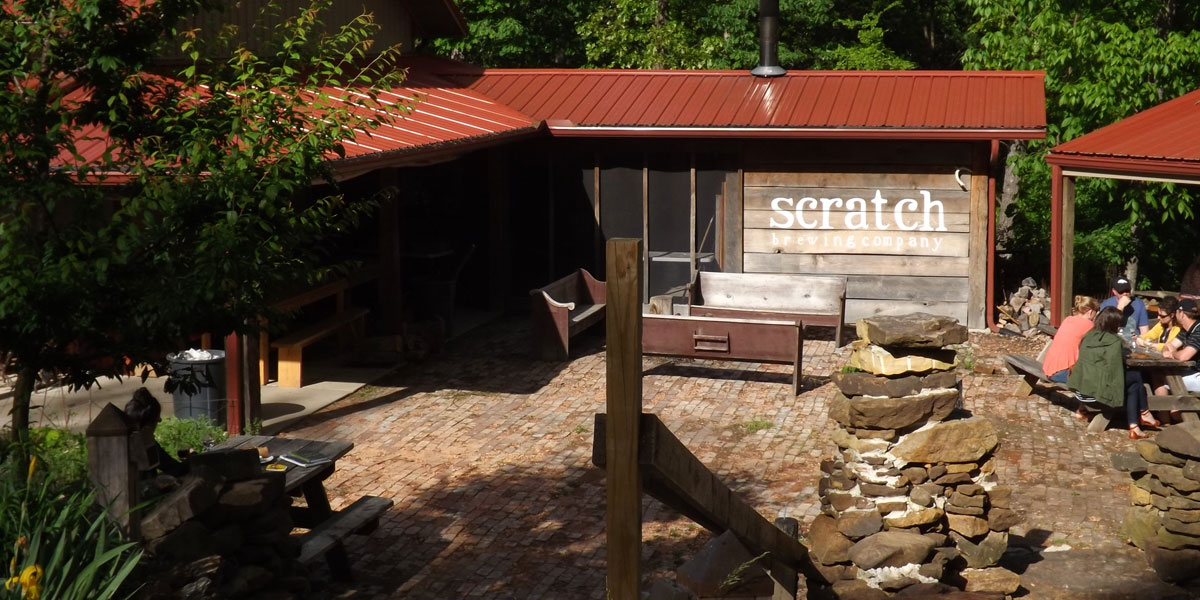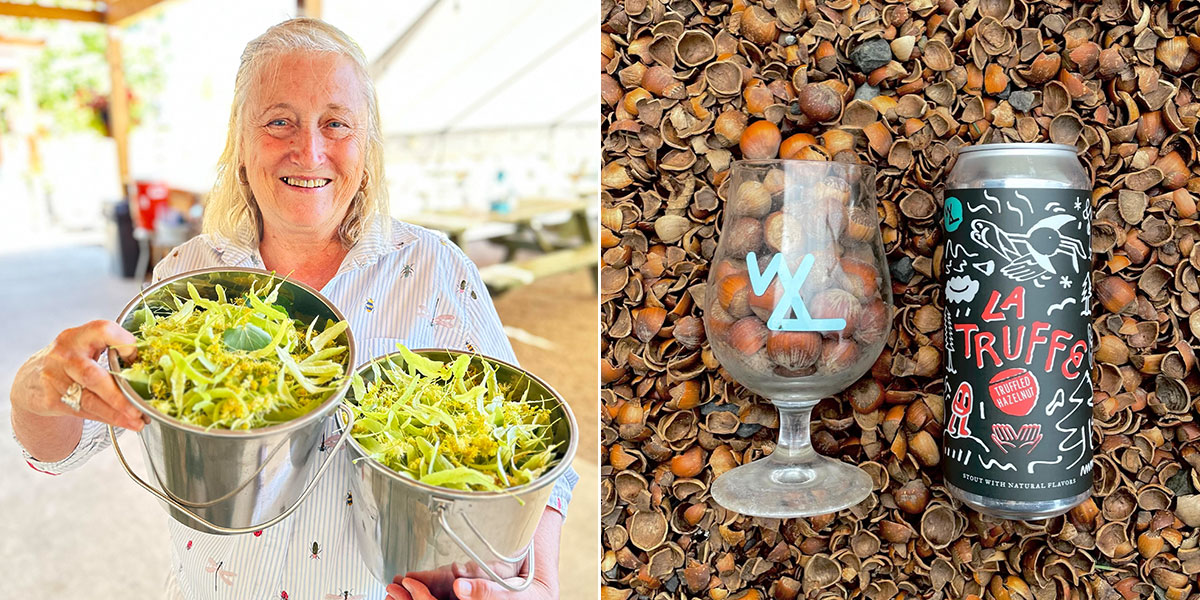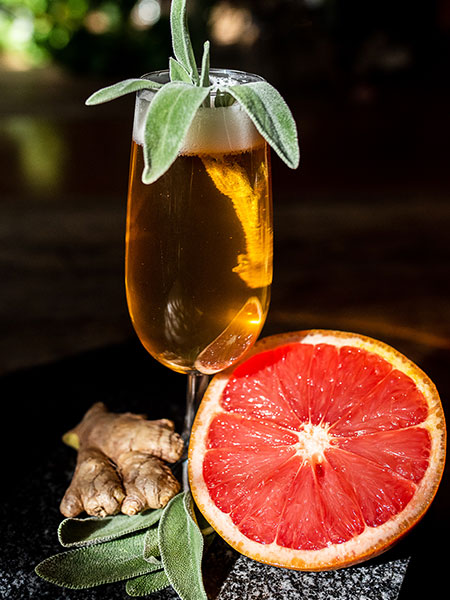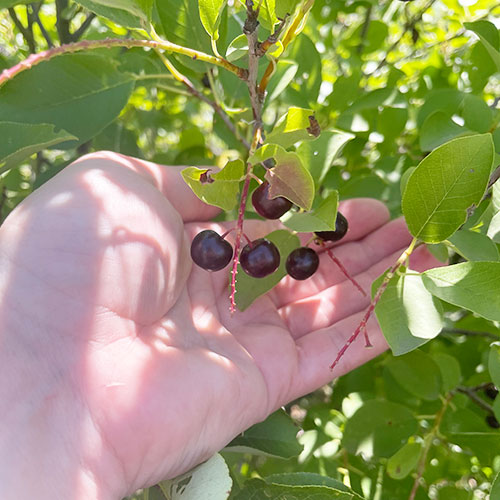American brewers are known for experimenting with all kinds of wild ingredients, from breakfast cereals to tropical fruit, but “wild” usually isn’t meant to be taken literally. Some brewers, however, are looking to the actual wild places around their breweries for their next unusual ingredient, often finding unexpected flavors growing right outside their doors, from mushrooms to pine tips. While foraging for brewing ingredients is nothing new, many breweries are using this ancient brewing tradition to create unique and surprising modern beers.
Only Scratching the Surface
Perhaps the best-known example of this practice is Scratch Brewing, a small brewery nestled into the wooded hills near Ava, Illinois. Since opening the doors in 2013, founders and brewers Aaron Kleidon and Marika Josephson (a third founder, Ryan Tockstein, has since stepped away) have worked with ingredients from the woods and fields around their brewery to create uniquely middle-American beers such as Dead Leaves (brewed with oak, hickory, and maple leaves) and Baby Basil (made with three different kinds of basil and local honey).
“We have tried really hard to express our terroir,” explains Josephson. “We wanted to share what it’s like to be in the woods in southern Illinois and be physically picking things out of the ground here.”
(See also: Brewers Publications Presents: Brewing Local: American-Grown Beer)
She and Kleidon haven’t stuck to just familiar foraged ingredients such as dandelions or pawpaws (though they’ve used both); instead, they are continually thinking outside the box of what can be used in a beer and how. Some of their most unusual beers are made using just about every anatomical part of the trees in their forest, including bark, branches, dead leaves, and nuts. Often, a beer will be brewed using as many of these ingredients from the same species as possible to create a complete flavor picture of that tree, from root to branch. In spring, they brew a series of beers using tree sap to replace 100 percent of the brewing water.

“We’re not having to physically eat [each ingredient], so it opens up a lot of possibilities,” says Kleidon of ingredients such as toasted hickory bark.
Scratch has recently started leading foraging walks in their forest to help visitors understand how the process works. They’ll make teas with the ingredients they find so guests can smell them on their own, and then they’ll taste beers made with those ingredients to draw the line from ground to glass.
No Truffling Matter
Christian DeBenedetti first learned about foraging for brewing ingredients on a forest hike led by Eric Steen, whose Beers Made by Walking series has introduced many to the practice. Before opening Wolves & People Farmhouse Brewery outside Newberg, Oregon, in 2016 on the site of the farm he grew up on, he began looking around the farm property for ingredients that could be fun to use.
DeBenedetti harvested his first yeast strain from the wild plum tree that grows in the meadow. Each year, he brews a beer using the wild mustard that carpets the whole farm in early summer. In the spring, he harvests Douglas fir tips from a tree 20 feet from the brewhouse door.

“One after another we started to see the potential in all these things that are close by,” he says.
One intriguing example is found in La Truffe, a table stout brewed with hazelnuts aged with white truffles that showcases the delicate flavors of these rare fungi.
“The Oregon white truffle is a really magical thing that has a whole culture around it of foragers and foodies,” he explains. He says the ingredient is so alluring because it’s never been successfully cultivated; it must be foraged.
Bringing Them into the Story

Not every foraged ingredient has a cult following like white truffles enjoy though, and educating consumers about unusual botanicals can be a challenge. Nia Ryan at Herbiery Brewing in Madison, Wisconsin, brews entirely without hops, replacing them with a range of both locally foraged and remotely sourced botanicals, and says one-on-one communication is often important for getting people to try these beers on their own terms.
“Most people are just curious, but some people approach them like ‘These aren’t beers,’ and they’re upset about it,” Ryan explains about beers made with ingredients such as sumac berries or lemon balm. “We always say we appreciate people who are passionate. We talk about herbs and spices that aren’t usually featured but bring really interesting flavors. Everyone’s usually pretty satisfied with that conversation.”
At Purpose Brewing in Fort Collins, Colorado, industry veteran Peter Bouckaert agrees it’s often necessary to break down barriers before someone will accept a beer with unfamiliar ingredients.
“It becomes a bit difficult because people use IPA as a defense word when they go to a bar and they don’t find that right away at Purpose,” he says. “At that point we talk with them about food preferences, and we romanticize the ingredient and where we found it. We bring people into the story.”

While educating consumers is important, brewers are also often encountering a foraged ingredient for the first time. Experimenting is key to getting a beer dialed in. At Scratch, this starts with smelling and tasting the ingredient itself in its rawest form.
“We’ll make a tea and talk about it, or if it’s a leaf, we’ll chew on it a little bit, see what flavors jump out,” says Kleidon. “Then we work with what we have to emphasize the flavors that already exist.”
At Purpose, Bouckaert will brew a base beer, split it into one-liter pots, and essentially dry hop each with different ingredients—such as alder twigs or Colorado sage—to see how they perform.
“We are acting not as American brewers,” he says. “We are acting as chefs with our ingredients.”
Purpose often has jars of those ingredients behind the bar to show to customers.
The seasonal nature of foraging can complicate the education component, however. At Herbiery, Ryan points out that due to the time it takes to brew a beer, the foraged ingredient in any given beer is often no longer in season by the time the beer is being released. They plan to begin aging foraged beers to release the following year at the beginning of an ingredient’s annual availability to facilitate those conversations with guests.
Closing the Loop
Many more breweries around the country are working with foraged ingredients for limited release beers, including Fonta Flora Brewery in North Carolina and Little Fish Brewing in Ohio. Whether it’s just for an occasional seasonal beer, or as a guiding philosophy for the brewery, foraging offers a unique storytelling opportunity, and ties beer back to the land.
“Brewers can go online and order a pasteurized ingredient, and we don’t think that’s a bad way to make a beer,” says DeBenedetti. “But if you have the opportunity to go out into the woods and bring back something unusual, it really closes the loop in a way that is delicious and fun and low impact.”
The post Foraging For Beer’s Wildest Ingredients appeared first on CraftBeer.com.
